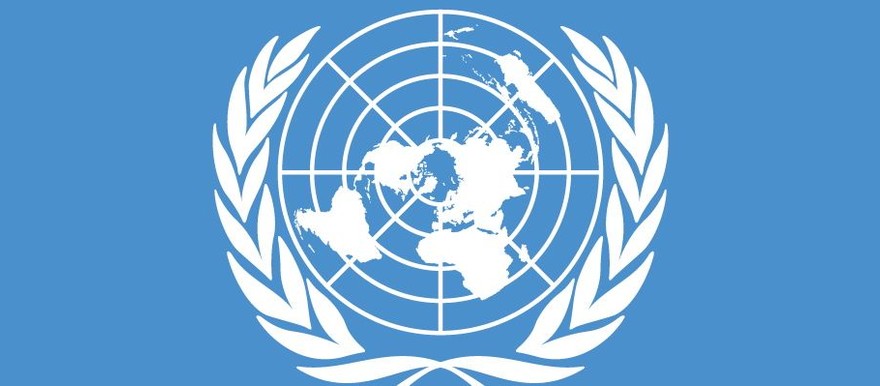The United Nations Mission in South Sudan (UNMISS) has compiled an Interim Report on Human Rights, covering the period of 15 December 2013 until 31 January 2014.
Dated 21 February, the report by the peacekeeping mission’s Human Rights Division includes a section on crimes allegedly committed in Central Equatoria State at the outset of the crisis, from which the excerpts below are quoted verbatim.
Begin text:
At around 10:00 p.m. on 15 December, fighting erupted at the SPLA General Headquarters in Giada between SPLA elements in the Presidential Guard who were loyal to different factions of the SPLM party. That night, the crisis spread and fighting occurred in at least two other SPLA locations, Bilpam SPLA Headquarters and the SPLA armory in New Site. Fighting continued into the early hours of the next morning, and the armory was broken into, with killing and looting of arms, ammunition, and uniforms. An unknown number of presidential guards and SPLA soldiers were killed, in addition to civilians who were killed or injured when caught in the crossfire.
By the morning of 16 December, there was general confusion and panic. Radio broadcasts advised people to stay at home and the President imposed a curfew. Witness testimonies suggest that as early as 8:00 a.m., SPLA-elements of Dinka origin reportedly began targeting civilians of Nuer origin, who were beaten, arrested, and killed, notably after house-to-house and hotel-to-hotel searches. By the end of the day, about 800 civilians had taken shelter at the UNMISS Tongping compound. By the next day, that number had swelled to over 10,000.
Thousands more sought protection at sites such as churches in Juba and surrounding areas. By 31 January, the incidents that are described below had led to nearly 38,650 people – the vast majority of whom were civilians of Nuer origin – seeking shelter in the PoC areas within the two UNMISS compounds in Juba.”
…Eyewitness accounts gathered to date suggest that at least 225 civilians, mainly of Nuer origin, were extra-judicially killed in individual incidents in Mia Saba and New Site on 16 December. Extra-judicial killings continued on a daily basis until 18 December. House-to-house searches for civilians of Nuer origin were conducted in areas near the armory that were known to be populated with people of Nuer origin – Mia Saba, Mangaten, Eden, Lologo, and Jebel – as well as in other parts of Juba.
Survivors and witnesses reported that civilians of Nuer origin were killed at police stations, in the streets as they tried to flee, or in their homes and residential compounds. In some cases, civilians of Nuer origin were reportedly tied to each other in a line before being forced to walk to another location to be killed.
In others, SPLA soldiers reportedly of Dinka origin went to the homes of colleagues they knew to be of Nuer origin and killed them, or identified Nuers with a language test or by facial scarring. Witnesses reported seeing hundreds of bodies of civilians in the streets of their neighborhoods or as they fled to UNMISS compounds.
Most victims were reportedly male, but several women and children were also killed, threatened or beaten by SPLA soldiers. In one specific incident, a family of two wives and eight children, male and female, were reportedly all found daed with gunshot wounds…
In many cases, the perpetrators of these extrajudicial killings were allegedly SPLA soldiers of Dinka origin, with some witnesses identifying members of the Presidential Guard, also known as the Tiger Battalion. There are also reports that SPLA soldiers of Nuer origin allegedly killed civilians and soldiers from their own community after being coerced by SPLA soldiers of Dinka origin. Further reports suggest that a so-called ‘special forces’ unit composed of SSNPS, SPLA, NSS, and Wildlife engaged in these targeted killings, among other violations.
…on 16 December… eight youth of Nuer origin were reportedly shot after being forced to face a wall with their arms behind their heads, allegedly by SPLA soldiers of Dinka origin in uniform. In another incident that same morning, an unknown number of SPLA soldiers arrested 38 civilians of Nuer origin living in Northern Bari Payam. They reportedly tied them together in a line and forced them to walk. Along the way, some individuals were untied and told to run while the soldiers shot at them.
The Human Rights Division is also investigating reports at least three mass killings that allegedly took place between 16 and 17 December in Khator Payam and Gudele. In one widely reported incident, it is alleged that approximately 200 men of Nuer origin, aged from 15 to 50 years, were gathered at a former police station in Gudele and were killed. The Human Rights Division estimated that hundreds of civilians of Nuer origin were killed in these mass killings, allegedly by Dinka SPLA soldiers, NSS, and some SSNPS. This information is currently being further verified.
…HRD has documented five separate incidents on 16 December in Northern Bari Payam, where several male civilians of Nuer origin, including a group of students, were reportedly tied together by armed SPLA soldiers in uniform and taken on foot to different locations in Juba, where they were killed or made to disappear.
After this initial period of the crisis (16-20 December), the situation in Juba stabilized. Immediately thereafter, defected SPLA soldiers of Nuer origin began to leave Juba to join opposition forces elsewhere…
As of 31 January [the end of period covered by the UN report], attacks against civilians of Nuer origin in Juba continued. SPLA soldiers and heavily armed civilians were reportedly still conducting house-to-house searches for Nuers, who were also targeted on their way to and from safe havens. These included a number of incidents against IDPs leaving UNMISS PoC sites, including abductions, arrests, harassment, and acts of conflict related to sexual violence.




